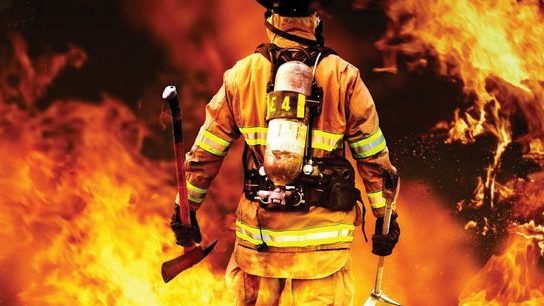

By Ili Aqilah and Khaleeja Suhaimi
The whole nation was in shock when 24 people, mostly teenagers, were killed by fire as they were trapped behind a blocked exit and barred windows of their school dormitory. While a few students and teachers were rescued, officials raised concerns over the lack of safety and Ipoh Echo took the initiative to explore further.
Under Fire – Get Out, Stay Out
Providing a Safer Place
With the recent concern on fire safety, Ipoh Echo investigated fire safety requirements in public places such as hospitals, shopping malls and hotels. Fire safety refers to the set of practices proposed to avoid damage caused by fire.
What most Malaysians are still unaware of is that all public buildings need to get a Fire Certificate (FC). FC is issued by the Fire and Rescue Department under the Fire Services Act 1988 (Act 341), ensuring that the buildings are following proper fire safety guidelines and are equipped with adequate fire-fighting equipment.
The equipment needed in a building are usually the fire extinguisher, fire hose reel, smoke detector, smoke control, fire sprinkler and exit door hardware. A fire extinguisher is mandatory in every building (schools, shopping malls, hospitals, hotels, office buildings), lorries, buses, all public transportation and all vehicles shipping goods. A fire hose reel can be placed indoors, where it is attached to a building’s standpipe or plumbing system or outdoors, attached to a fire hydrant.


According to the Fire Protection Association of Malaysia Berhad (FPAM), the majority of the shopping malls in Malaysia are not properly exposed to fire safety guidelines and they do not manage the equipment well. Some enduring problems are sprinkler systems not working over a period of time, sprinkler pumps are always switched off, damaged pump panels and more. Hence, high-value fire protection is not put to proper use.


In addition, most of the people in charge of the fire safety section are not committed. They do not practise constant monitoring and take their responsibilities lightly. Regular fire drills must be encouraged to educate the public that a fire can occur at any time of the day. Emergency routes and exits should also be unlocked most times for emergency reasons.
Based on the information taken from the Fire and Rescue Department of Malaysia’s website, there are a few steps that can be taken to avoid fire. Firstly, identify all exits in a building. When a building has already caught fire and there is too much smoke, start crawling and make sure your head is 30cm to 60cm above floor level as the air at that level would be clean. Also, try to cover any holes with blankets or cloths to avoid more smoke coming in.
If smoke is accessible through windows, close the window. A smoke detector is advised to be put on every level of a building, including the bedroom and living room. It has been proven that buildings with smoke detectors can save 50% more lives than buildings which do not have them. Another reminder for smokers is to not smoke while sleepy, drunk or if one has consumed medicine causing drowsiness. And definitely do not smoke in bed.
Avoid overusing electrical circuits and place matches or lighters at a high place so children cannot reach them. Non-combustible building materials need to be used to avoid the access or spread of fire. Plan and practise using emergency exits so one will not panic in the actual situation.
Public Opinions


“The Fire and Rescue Department should monitor centres that are run by NGOs or private bodies more often because we don’t know what needs to be done. They don’t need to be called to come, they should take the initiative themselves. Maybe send us a letter to constantly remind us about fire safety. That would suffice,” she expressed.


For Iris Cheong Kwei Foong, 57, a mother of four, 

“I attended a talk organized by a fire-fighting equipment company a few years ago. From the talk, I gained new knowledge about fire safety and even bought mask, fire extinguisher and smoke detector from them and that probably averted a minor disaster in my home just a couple of weeks back,” said Iris to Ipoh Echo.
She later added that as a parent, she made sure that all her children have basic information about how and what to do when a fire emergency occurs.
“I told them the basics. For example, in the case of fire, your hair will be the first to get burnt, so try to wet a piece of cloth or blanket to cover your head. Next is to turn on all taps in the house and look for an escape route. They also know that they need to cover their nose with a wet towel to prevent smoke inhalation,” said Iris.
Her children, aged from 17 to 32, are also taught to keep all the keys in a fixed place as during a fire, one tends to get disoriented. Iris also hopes that schools will start teaching students about fire safety to avoid any bad circumstances later.


According to Ain, there is currently no specific chapter dedicated for fire safety in the primary school English syllabus. However, there is a topic on safety, focusing on road safety, home safety, and how to handle natural disasters. When asked if she thinks there should be a chapter dedicated just for fire-safety, Ain believes that it doesn’t necessarily have to be in the syllabus. She suggested that more campaigns, talks and demonstrations by the fire department and organised by the school are some of the great ways to teach pupils on fire safety.
Regarding the recent case where fire killed 24 people in Dato Keramat, “It honestly broke my heart. The incident happened at night, while everyone was in deep sleep. Even if there was an emergency exit, it doesn’t guarantee that everyone will make it out alive. In my personal point of view, we need to identify the root cause that led to the fire itself,” added Ain who was shocked when she found out about the seven youths who were arrested as suspects in the case. Ain also added that family also plays a significant role to monitor the children’s routines and activities including the people they befriended.
It is Better to Educate Before It’s Too Late
Not only must parents and teachers make sure that their children and students know what to do in a fire emergency, the public must also get familiarized with fire drills. Getting ourselves familiar with procedures is as vital as making sure our surrounding is safe!


